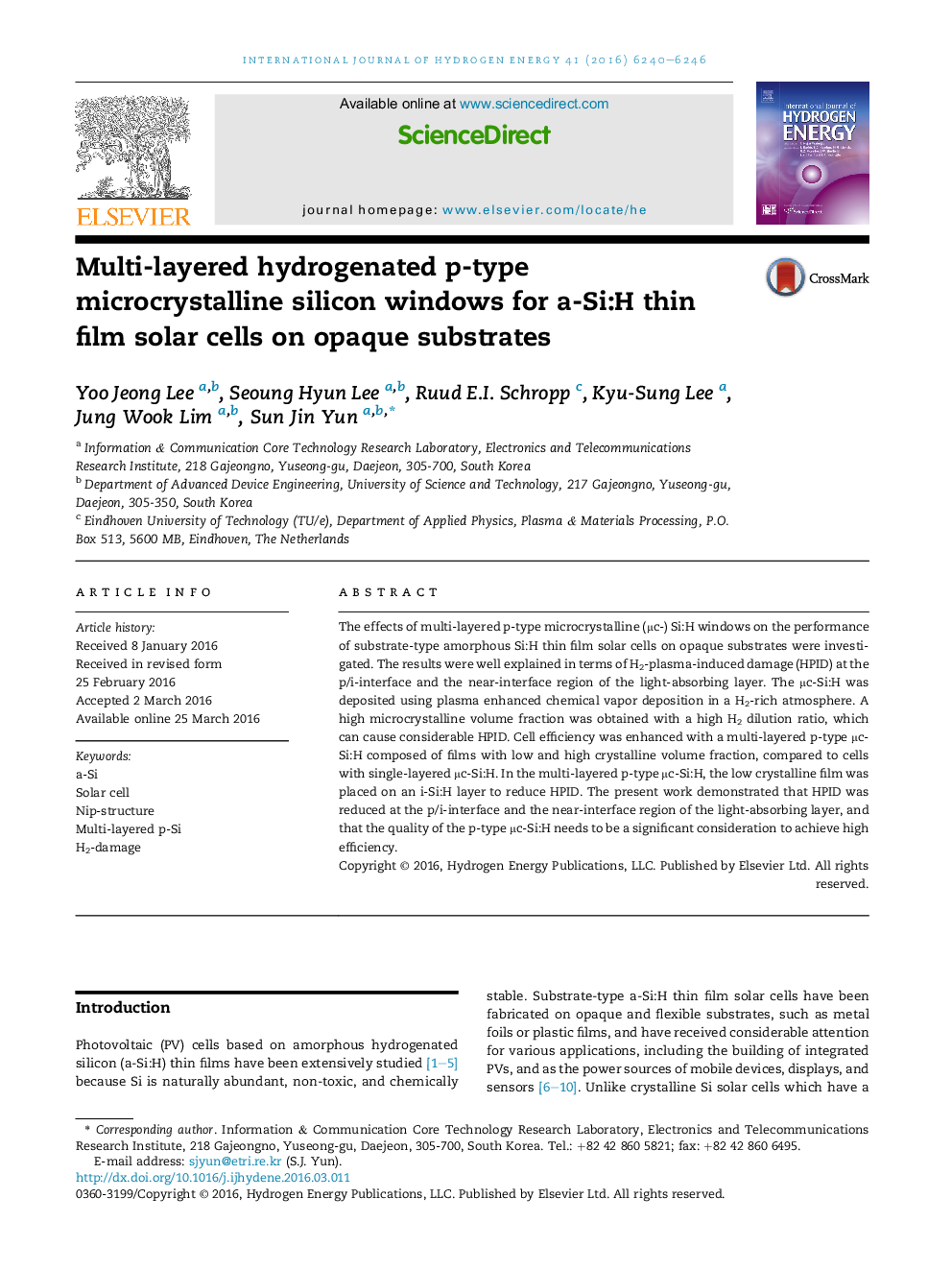| Article ID | Journal | Published Year | Pages | File Type |
|---|---|---|---|---|
| 7711060 | International Journal of Hydrogen Energy | 2016 | 7 Pages |
Abstract
The effects of multi-layered p-type microcrystalline (μc-) Si:H windows on the performance of substrate-type amorphous Si:H thin film solar cells on opaque substrates were investigated. The results were well explained in terms of H2-plasma-induced damage (HPID) at the p/i-interface and the near-interface region of the light-absorbing layer. The μc-Si:H was deposited using plasma enhanced chemical vapor deposition in a H2-rich atmosphere. A high microcrystalline volume fraction was obtained with a high H2 dilution ratio, which can cause considerable HPID. Cell efficiency was enhanced with a multi-layered p-type μc-Si:H composed of films with low and high crystalline volume fraction, compared to cells with single-layered μc-Si:H. In the multi-layered p-type μc-Si:H, the low crystalline film was placed on an i-Si:H layer to reduce HPID. The present work demonstrated that HPID was reduced at the p/i-interface and the near-interface region of the light-absorbing layer, and that the quality of the p-type μc-Si:H needs to be a significant consideration to achieve high efficiency.
Keywords
Related Topics
Physical Sciences and Engineering
Chemistry
Electrochemistry
Authors
Yoo Jeong Lee, Seoung Hyun Lee, Ruud E.I. Schropp, Kyu-Sung Lee, Jung Wook Lim, Sun Jin Yun,
